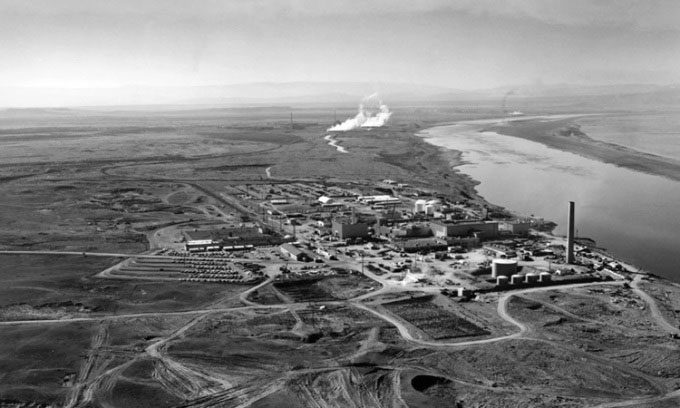The Hanford Site Remains an Environmental Burden and a Nightmare for Local Residents Decades After Plutonium Production Ceased.
The atomic bomb explosion in Nagasaki in 1945 originated from the Hanford Site in a desert in Washington State, which produced vast amounts of radioactive waste throughout the 20th century. Spanning an area of 1,550 square kilometers, the Hanford Site was established in 1943 as part of the Manhattan Project with the sole purpose of producing plutonium on an industrial scale. Utilizing 9 reactors and 5 large plutonium processing complexes, significant quantities of plutonium for weaponry were produced by irradiating uranium fuel rods, according to IFL Science.

Hanford Site by the Columbia River. (Photo: Wikimedia).
The materials produced at Hanford were responsible for some of the most devastating explosions ever created by mankind. In the early days of the site, plutonium was transported from Hanford to the Los Alamos Laboratory in New Mexico, where scientists involved in the Manhattan Project utilized this material in the development of nuclear weapons. Part of the material was used to create the atomic bomb for the Trinity test, the world’s first nuclear explosion, and “Fat Man,” the bomb dropped by the U.S. on Nagasaki at the end of World War II.
The facility, located in a remote area of Benton County in Washington State, was chosen for its abundant supply of cold water from the Columbia River, which helped cool the reactors. This location was also relatively isolated, although some residents were required to relocate to build the site. In early 1943, approximately 1,500 local residents received letters from the U.S. government asking them to vacate their homes within 90 days.
From 1944 to 1989, the Hanford Site produced 74 tons of plutonium for the U.S. nuclear weapons program. This created a tremendous amount of byproducts and radioactive waste, including 212 million liters of waste stored in 177 large underground tanks made of steel-reinforced concrete. Production ceased in the late 1980s as the Cold War was coming to an end, and a cleanup program was initiated, but this has proven to be quite difficult.
Over the years, the Department of Energy is estimated to have discharged millions of liters of wastewater directly into the ground and the Columbia River. According to the New York Times, radioactive materials released from the Hanford Site into the river have flowed into the Pacific Ocean over 322 kilometers downstream. Along the way, it contaminated drinking water and was absorbed by fish, exposing thousands of people to potentially dangerous levels of radiation.
In addition to wastewater, the underground storage tanks have also caused numerous problems and tend to leak. In 2013, the Governor of Washington stated that the tanks were losing approximately 568 to 1,135 liters per year. The leaking wastewater seeped into the surrounding soil and aquifer, spreading into the environment. Groundwater contamination occurred over a total area of 207 square kilometers in the 1980s, and groundwater in 155 square kilometers remains contaminated above federal standards. As a result, many areas at the Hanford Site restrict access.
Radiation has severely impacted the health of local residents, even decades after the facility closed. Rates of cancer, infertility, thyroid disease, and lymphoma have increased among people living near the Hanford Site. “Plutonium has a half-life of 24,000 years, making it a long-term issue that spans multiple generations. The cleanup process does not make the waste at Hanford disappear. Most of it will be there permanently.“ Dr. Shannon Cram, an associate professor in the School of Interdisciplinary Arts and Sciences at the University of Washington Bothell, emphasized.


















































